
Gradual emancipation was a legal mechanism used by some U.S. states to abolish slavery over some time, such as An Act for the Gradual Abolition of Slavery of 1780 in Pennsylvania. [1]

Gradual emancipation was a legal mechanism used by some U.S. states to abolish slavery over some time, such as An Act for the Gradual Abolition of Slavery of 1780 in Pennsylvania. [1]
In the 16th century, Bartolomé de las Casas advocated ending enslavement. He stated that it was immoral, but there was pressure economically and politically to maintain slavery. Some of those who advocated for change wanted to end the transatlantic slave trade, because of how torturous it was, but still supported slavery. Others wanted to end slavery entirely. [2]
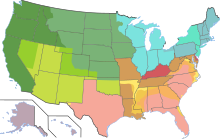
The Age of Enlightenment of the late 17th century influenced increasing support for emancipation in the 18th century. [2] In the 1770s, Black people throughout New England began sending petitions to northern legislatures demanding freedom. [3] Pennsylvania's An Act for the Gradual Abolition of Slavery of 1780 was the first legislative enactment in the United States. [4] It specified that
Every Negro and Mulatto child born within the State after the passing of the Act (1780) would be free upon reaching age twenty-eight." [4]
Once the Pennsylvania residents were freed, they were supposed to be treated the same as indentured servants who were contracted for four years of service. For instance, they were to receive tools of their trade or other privileges. [4]
Four other Northern states adopted policies to at least gradually abolish slavery: New Hampshire and Massachusetts in 1783, and Connecticut and Rhode Island in 1784. The Republic of Vermont had already limited slavery in its original constitution (1777), before it joined the United States as the 14th state in 1791. These state jurisdictions thus enacted the first abolition laws in the Americas. [3] By 1808, the importation of enslaved people was prohibited (though smuggling continued), and by the 1820s all Northern states enacted laws for either gradual or immediate emancipation. [5] By 1860, U.S. Census data showed that almost all Northern states had no slaves except for New Jersey which had enacted such gradual emancipation that there were still 18 slaves enumerated by the census. [6] [ circular reference ]
Starting in the early 19th century, the concept of gradual abolition spread from the US to Latin America, where it became known as Freedom of wombs.
Abraham Lincoln proposed an amendment to the Constitution for gradual emancipation in 1861 and 1862, culminating with the Second Message to Congress in December 1862. However, he realized that immediate emancipation was what was needed, because there was increasing support for emancipation in the north and slaves helped the Confederates during the war. This led to the Emancipation Proclamation, which went into effect on January 1, 1863. [7] The Thirteenth Amendment to the United States Constitution was ratified at the end of the war, making slavery illegal in every state, and all enslaved people were freed. [8]

The Emancipation Proclamation, officially Proclamation 95, was a presidential proclamation and executive order issued by United States President Abraham Lincoln on January 1, 1863, during the American Civil War. The Proclamation had the effect of changing the legal status of more than 3.5 million enslaved African Americans in the secessionist Confederate states from enslaved to free. As soon as slaves escaped the control of their enslavers, either by fleeing to Union lines or through the advance of federal troops, they were permanently free. In addition, the Proclamation allowed for former slaves to "be received into the armed service of the United States". The Emancipation Proclamation played a significant part in the end of slavery in the United States.
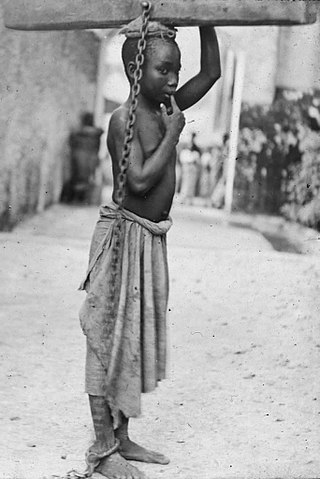
Abolitionism, or the abolitionist movement, is the movement to end slavery and liberate enslaved individuals around the world.

The legal institution of human chattel slavery, comprising the enslavement primarily of Africans and African Americans, was prevalent in the United States of America from its founding in 1776 until 1865, predominantly in the South. Slavery was established throughout European colonization in the Americas. From 1526, during the early colonial period, it was practiced in what became Britain's colonies, including the Thirteen Colonies that formed the United States. Under the law, an enslaved person was treated as property that could be bought, sold, or given away. Slavery lasted in about half of U.S. states until abolition in 1865, and issues concerning slavery seeped into every aspect of national politics, economics, and social custom. In the decades after the end of Reconstruction in 1877, many of slavery's economic and social functions were continued through segregation, sharecropping, and convict leasing. Involuntary servitude as a punishment for crime is still legal in the United States.

In the United States before 1865, a slave state was a state in which slavery and the internal or domestic slave trade were legal, while a free state was one in which they were prohibited. Between 1812 and 1850, it was considered by the slave states to be politically imperative that the number of free states not exceed the number of slave states, so new states were admitted in slave–free pairs. There were, nonetheless, some slaves in most free states up to the 1840 census, and the Fugitive Slave Clause of the U.S. Constitution, as implemented by the Fugitive Slave Act of 1793 and the Fugitive Slave Act of 1850, provided that a slave did not become free by entering a free state and must be returned to their owner. Enforcement of these laws became one of the controversies which arose between slave and free states.
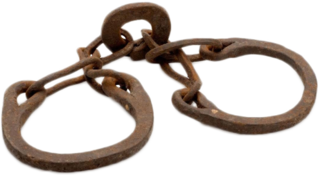
Emancipation Day is observed in many former European colonies in the Caribbean and areas of the United States on various dates to commemorate the emancipation of slaves of African descent.
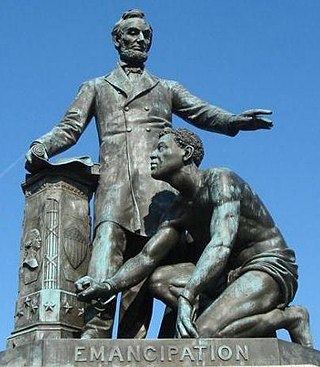
Abraham Lincoln's position on slavery in the United States is one of the most discussed aspects of his life. Lincoln frequently expressed his moral opposition to slavery in public and private. "I am naturally anti-slavery. If slavery is not wrong, nothing is wrong," he stated. "I can not remember when I did not so think, and feel." However, the question of what to do about it and how to end it, given that it was so firmly embedded in the nation's constitutional framework and in the economy of much of the country, even though concentrated in only the Southern United States, was complex and politically challenging. In addition, there was the unanswered question, which Lincoln had to deal with, of what would become of the four million slaves if liberated: how they would earn a living in a society that had almost always rejected them or looked down on their very presence.
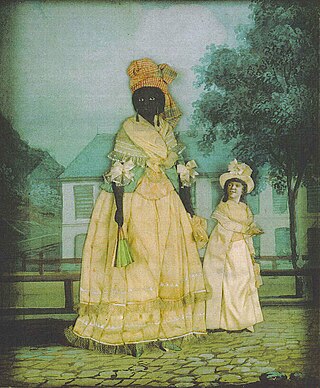
In the British colonies in North America and in the United States before the abolition of slavery in 1865, free Negro or free Black described the legal status of African Americans who were not enslaved. The term was applied both to formerly enslaved people (freedmen) and to those who had been born free, whether of African or mixed descent.

Compensated emancipation was a method of ending slavery, under which the enslaved person's owner received compensation from the government in exchange for manumitting the slave. This could be monetary, and it could allow the owner to retain the slave for a period of labor as an indentured servant. In practice, cash compensation rarely was equal to the slave's market value.
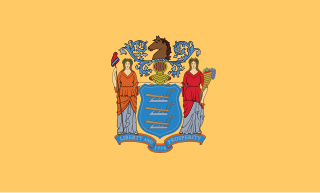
Slavery in New Jersey began in the early 17th century, when the Dutch trafficked African slaves for labor to develop the colony of New Netherland. After England took control of the colony in 1664, Britain continued the importation of slaves from Africa. They also imported "seasoned" slaves from their colonies in the West Indies and enslaved Native Americans from the Carolinas.
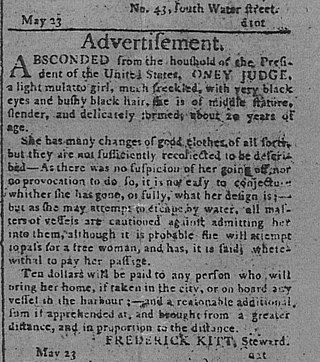
Ona Judge Staines, also known as Oney Judge, was enslaved by the Washington family, first at the family's plantation at Mount Vernon and later, after George Washington became president, at the President's House in Philadelphia, then the nation's capital city. In her early twenties, Judge absconded, becoming a fugitive slave, after learning that Martha Washington had intended to transfer her ownership to her granddaughter, known to have a horrible temper. Judge fled to New Hampshire, where she married, had children, and converted to Christianity. Though Judge was never formally freed, the Washington family ultimately stopped pressing her to return to enslavement in Virginia after George Washington's death.
Quock Walker, also known as Kwaku or Quork Walker, was an enslaved American who sued for and won his freedom suit case in June 1781. The court cited language in the 1780 Constitution of Massachusetts that declared, "All men are born free and equal". The case is credited with helping abolish slavery in Massachusetts, although the 1780 constitution was never amended to prohibit the practice explicitly. Massachusetts was the first U.S. state to effectively and fully abolish slavery—the 1790 United States census recorded no enslaved people in the state.

Free womb laws, also referred to as free birth or the law of wombs, was a 19th century judicial concept in several Latin American countries, that declared that all wombs bore free children. All children are born free, even if the mother is enslaved. This principle did not go into effect unless a country adopted it and included it in its constitution or other legislation. It overturned a tradition, under which babies born to enslaved women became the property of the women's owners. Intended as a step towards ending slavery, it was unevenly adopted.

Slavery was practiced in Massachusetts bay by Native Americans before European settlement, and continued until its abolition in the 1700s. Although slavery in the United States is typically associated with the Caribbean and the Antebellum American South, enslaved people existed to a lesser extent in New England: historians estimate that between 1755 and 1764, the Massachusetts enslaved population was approximately 2.2 percent of the total population; the slave population was generally concentrated in the industrial and coastal towns. Unlike in the American South, enslaved people in Massachusetts had legal rights, including the ability to file legal suits in court.

The trafficking of enslaved Africans to what became New York began as part of the Dutch slave trade. The Dutch West India Company trafficked eleven enslaved Africans to New Amsterdam in 1626, with the first slave auction held in New Amsterdam in 1655. With the second-highest proportion of any city in the colonies, more than 42% of New York City households enslaved African people by 1703, often as domestic servants and laborers. Others worked as artisans or in shipping and various trades in the city. Enslaved Africans were also used in farming on Long Island and in the Hudson Valley, as well as the Mohawk Valley region.
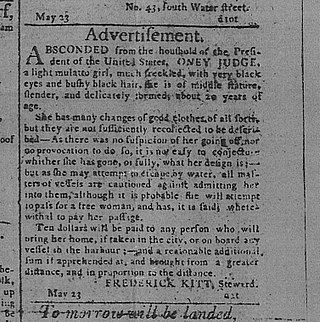
When the Dutch and Swedes established colonies in the Delaware Valley of what is now Pennsylvania, in North America, they quickly imported enslaved Africans for labor; the Dutch also transported them south from their colony of New Netherland. Enslavement was documented in this area as early as 1639. William Penn and the colonists who settled in Pennsylvania tolerated slavery. Still, the English Quakers and later German immigrants were among the first to speak out against it. Many colonial Methodists and Baptists also opposed it on religious grounds. During the Great Awakening of the late 18th century, their preachers urged slaveholders to free their slaves. High British tariffs in the 18th century discouraged the importation of additional slaves, and encouraged the use of white indentured servants and free labor.

An Act for the Gradual Abolition of Slavery, passed by the Fifth Pennsylvania General Assembly on 1 March 1780, prescribed an end for slavery in the Commonwealth of Pennsylvania in the United States. It was the first slavery abolition act in the course of human history to be adopted by an elected body.

In the United States, abolitionism, the movement that sought to end slavery in the country, was active from the colonial era until the American Civil War, the end of which brought about the abolition of American slavery, except as punishment for a crime, through the Thirteenth Amendment to the United States Constitution.

In the District of Columbia, the slave trade was legal from its creation until it was outlawed as part of the Compromise of 1850. That restrictions on slavery in the District were probably coming was a major factor in the retrocession of the Virginia part of the District back to Virginia in 1847. Thus the large slave-trading businesses in Alexandria, such as Franklin & Armfield, could continue their operations in Virginia, where slavery was more secure.

From the late 18th to the mid-19th century, various states of the United States allowed the enslavement of human beings, most of whom had been transported from Africa during the Atlantic slave trade or were their descendants. The institution of chattel slavery was established in North America in the 16th century under Spanish colonization, British colonization, French colonization, and Dutch colonization.

Following the creation of the United States in 1776 and the ratification of the U.S. Constitution in 1789, the legal status of slavery was generally a matter for individual U.S. state legislatures and judiciaries As such, slavery flourished in some states, and withered on the vine in others. On the whole, the former Thirteen Colonies abolished slavery relatively slowly, if at all, with several Northern states using gradual emancipation systems in which freedom would be granted after so many years of life or service.
{{cite book}}: |website= ignored (help)